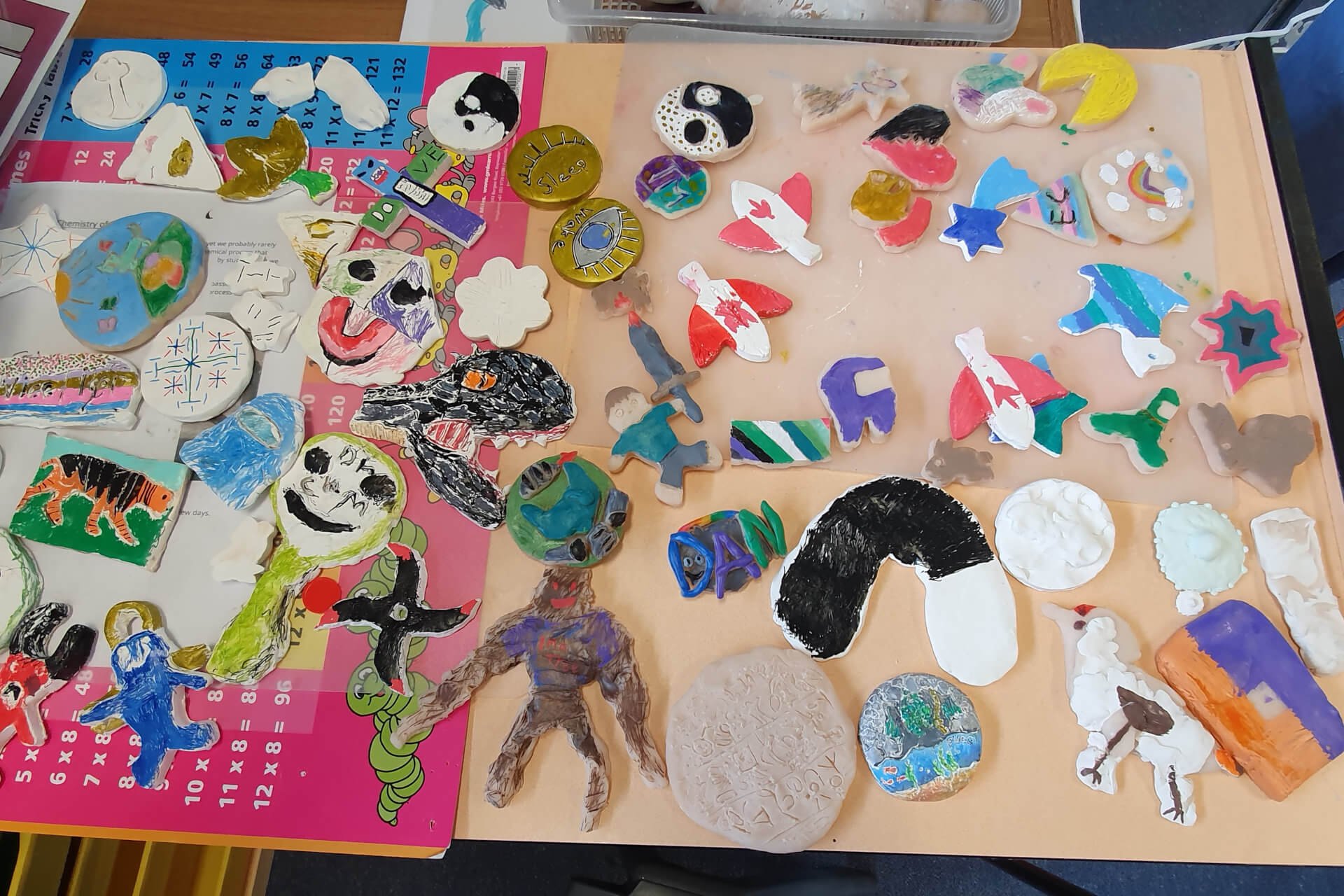
The Arts
Our diverse and inclusive arts program helps children express their unique gifts.
The arts are an important part of the curriculum at Village School, and we create a diverse and inclusive arts program to help children develop confidence in expressing their unique gifts and talents. We design our arts curriculum to cover all aspects of the Victorian curriculum, and to provide students with skills and experience across all the different art forms.
Arts curriculum
Although the arts cover a number of distinct subjects, they are closely related and are often used together in practical and creative ways. Students develop an understanding of past and present approaches and learn the practical skills of each area, starting with the basics and adding to these in tune with their individual abilities and interests.
-
Students develop an understanding of how physical movement can communicate and celebrate their personal experiences while promoting well-being and social inclusion. They explore imaginative ways of moving both individually and together, and use the elements of choreography and movement, to inspire and engage an audience.
-
Performing allows students to create meaning, and refine their ability to express ideas, stories and emotions, communicate them to an audience, and respond to performances. By creating, rehearsing and performing drama, children also learn how to collaborate, innovate and take on responsibility, and develop confidence in thinking, speaking, moving and acting.
-
Students explore the world through media, art and design as a means to express and challenge ideas, as artists and also as the audience, and develop an appreciation of the contribution of artists and designers. By encouraging children to explore and experiment with ways to communicate through various media, they see the world in new ways and develop the practical skills to create creative, engaging media.
-
Listening to and making music helps students appreciate the power of music to affect a person’s experience, and also develops their social, physical and cognitive abilities. Children learn to express ideas, emotions and experiences through music, learn about music in other times, places and cultures, and develop unique skills in aural learning.
-
Exploring visual arts helps children develop a range of different ways to communicate meaning in their creations, and an appreciation of the roles of artists, audiences and commentators. Students hone their skills of discovery and problem-solving, grow more confident in expressing their personal style, and learn the hands-on skills to create a range of art forms.
General capabilities
Developing skills across the broad range of subjects in the arts, also strengthens general skills in students, including:
Reading and writing scripts, music and other written arts texts
Understanding rhythm, beats and counts while listening and performing
Using ICT to research, plan and create art projects
Strengthening creative and analytical skills
Collaborating and communicating effectively with others in various forms
Expressing viewpoints and understanding the implications of art forms
Experiencing art from other cultures and time periods
Arts at Village School
The arts play a significant role at Village School, and we strive to give students the opportunity to explore a wide range of art forms, and discover their unique forms of expression.
Our arts program is incorporated into all learning activities, and our flexible approach to learning allows us to adapt activities to nurture students’ passions and strengthen.
Exploring the arts also gives students the chance to be creative with topics or activities, to help them remain engaged and motivated to learn, and develop the skills to become lifelong learners.
The fine arts are addressed both in the classroom and on our specialist days, including weekly music and art sessions. In the former they are usually integrated into the classroom theme and in the latter they focus more on developing skills and exploring different media.
Our specialist programs, including music, art and our annual school performance, help children develop practical skills across the arts and develop individual talents.
Across the year the children will learn notation for simple rhythms and solfege to aid melody playing on tuned percussion, recorders or pianicas.
Drama games and workshops will also occur so that in these classes, music, acting, dancing movement and design are all addressed. They also culminate in the whole school performance usually held in third term.
Examples of arts activities
Our students have plenty of hands-on, immersive experiences of the arts at Village School, as demonstrated by these examples.
-
Our annual school performance gives children a chance to experience all aspects of the arts through acting, singing, dancing, sets, costumes, tickets, programs and more.
Involving children in the creative side of the school play, making decisions about characters, story lines and set ideas usually takes place before the final play is written. Suggestions can come from a child at any age, and they are often followed up and included, at least in some form.
-
The children often create drawings to depict the backdrops needed for the play and then are also included in parts of the painting of the set, and for some older children, drawing parts of the backdrop.
-
The children design and then make props for the performance, and they often draw pictures of the characters they are playing and give these to the costume makers, who do a great job trying to combine the child's ideas with the needs of the performance. Some students have been involved in the sewing of costumes as well.




